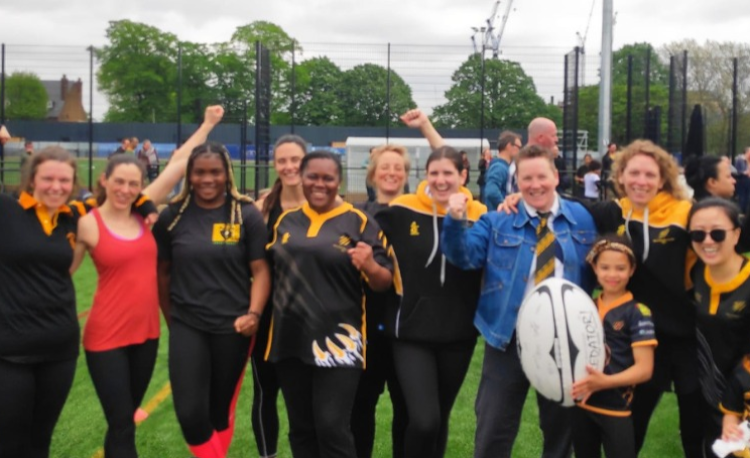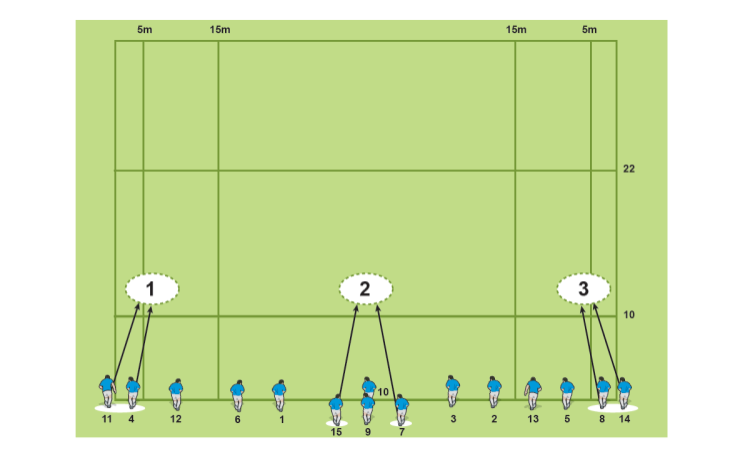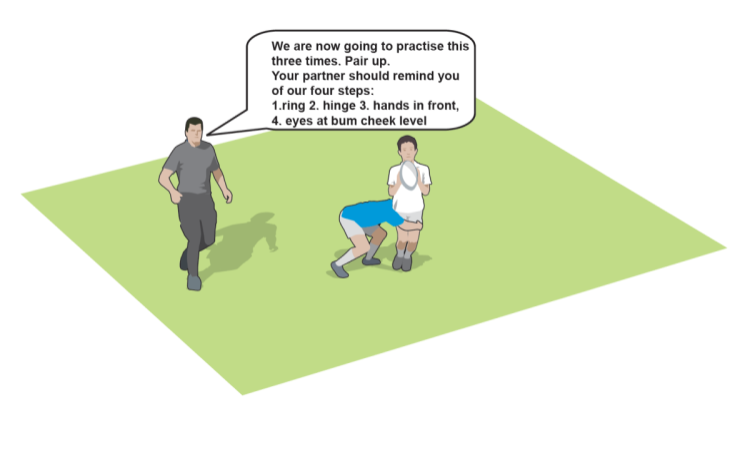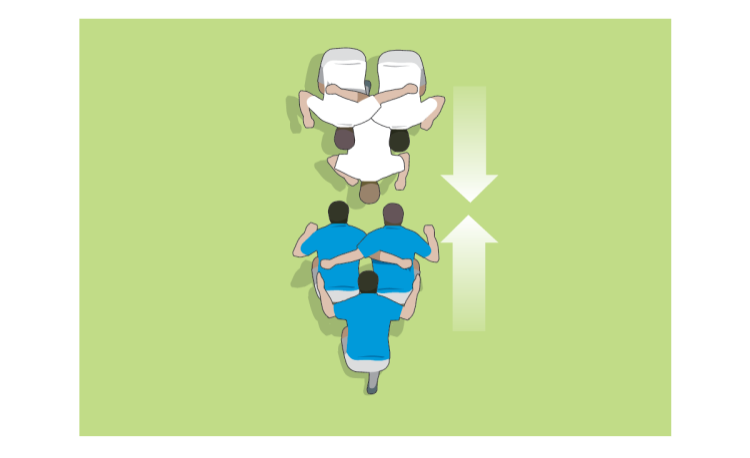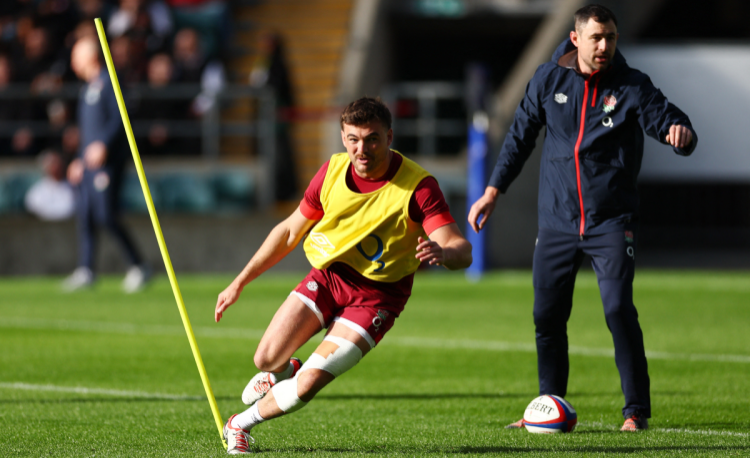You are viewing
1 of your 2 free articles
How to coach expert athletes new to rugby
The Rugby Town project aims to convert high-quality athletes, especially from an American Football background into top-class rugby players. Here are some of our approaches to build their skills and awareness of the game.

The NFL, the umbrella organisation for the top American Football franchises, attracts lead US athletes. They will go to university on scholarships with the aim of being picked up by a professional football franchise.
However, inevitably, not every player makes the transition from college to pro-football. These young men are often very suited to rugby. By judicious scouting, we’ve enticed a number of these players to come to Glendale, Colorado to see if they can make the conversion to rugby and follow a professional career in the game.
Through the sponsorship of the City of Glendale, we’ve created a programme to develop their skills and game awareness. My own background of coming to the game late from university football and then working with high school athletes transitioning into rugby has certainly given me a good grounding for what is possible.
But with this group, they are already athletically high-tuned and possess a number of skills already. The first hurdle is their complete lack of knowledge about the game.
My approach is to give them some basic guidelines for a particular aspect and then let them fill in the gaps. My language is simple, and as a former American football coach, I will use US jargon to help them understand a particular movement pattern. For example, what a rugby coach might call a support line, I would perhaps use the term “pursuit line”. Or sidestep would become a “juke”.
One advantage, apart from the fact they are physically incredibly developed, is that they don’t have any bad habits. They haven’t played the game, so everything is new.
SUPPORT PATTERN
Let’s start with the basics: A ball carrier runs forward towards the try line, which is a principle of rugby as much as any invasion game.
A support pattern is where the ball carrier and next nearest player interact to ensure possession. It follows the mantra: “Get it, keep it, use it”.
I tell the players to picture the defenders as doors. We need to open each door to go forward. The ball is the key to the door. If the ball carrier can move a defender to the side, or “fix” to a spot, there is space for a support player to run towards and receive a pass.
Here’s my four-stage process to work on a pattern. A pattern can sound like something quite sophisticated whereas, as you will see, it is deliberately simple here.
A: Pop
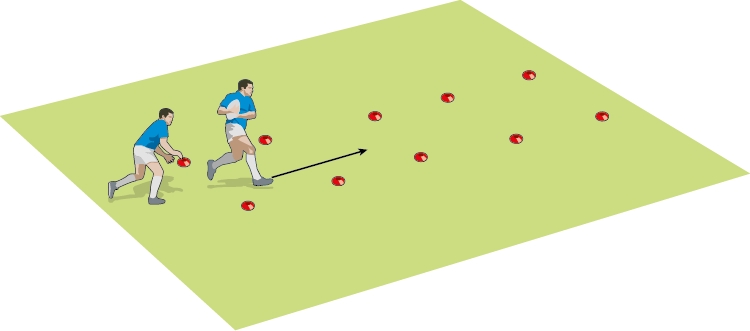
The ball carrier runs along a line and steps to the side, passing the ball into the space over the line. The support player runs into that space and catches the pass. Both run to the end, turn and repeat.
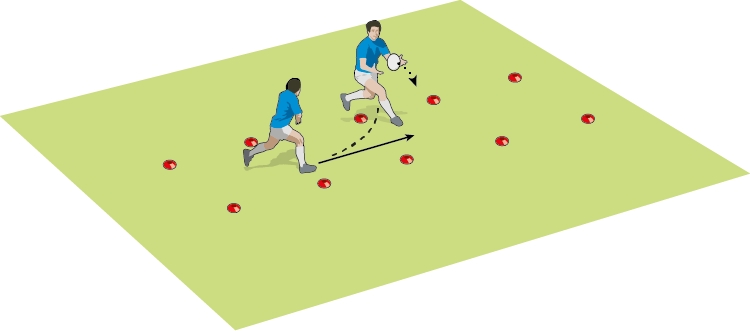
Before we start, I will demonstrate the pop pass. We don’t have any players who have done this before, but in normal circumstances, I would have asked a player.
While there’s plenty of technical points to make, I will simply focus on one decision. That is the amount of “air time” the ball has. This is dictated by the depth and speed of support player.
If you had watched the first few goes at this activity, you could safely say they were “pathetic”. I’ve let them do the activity and they’ve got to work out how to improve. Either they are asking themselves or I am asking: “Why is that not working”.
This is when we start to benefit from the players former professional attitudes, aptitude and culture. They quickly found ways to improve.
Here are the players doing this as a loop and run action.
B and C: Tackle
We’ve opened the door in the first activity. I would reiterate to the players that they need to pass before contact. Now we are going to look at the pattern if the ball player is tackled.
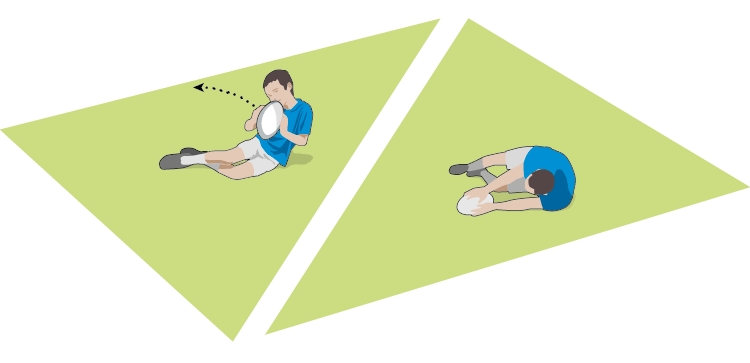
Run along the same line, the ball carrier goes to the side and passes as they are falling. Again, they are exploring the idea of air time and the depth of the support runner.
This then moves onto passing the ball once they have fallen to the ground. Now, the ball carrier has three options, depending on the actions of the tackler and the relative positioning of the support player.
C: Post tackle
Finally, in this activity, we need to consider the role of the ball carrier if they can’t pass. Now we would look at the ball carrier performing a “jackknife” or “long ball” placement. Again, this will require a suitable demonstration to show the ball placed as far back to towards the attacker’s own try line twisting and turning at the hips.
Essentially, we have given the players a clear idea of the principles of play, in this case, go forward, support and continuity. Then they have been able to action them in simple, step-by-step activities.
The information I give them is purposely open for them to work out their own solutions, while still giving them enough to detail to be able to give them a chance to perform.
Here is an example of how the players have developed this into a live situation:
Newsletter Sign Up
Coaches Testimonials

Gerald Kearney, Downtown Las Vegas Soccer Club

Paul Butler, Florida, USA

Rick Shields, Springboro, USA

Tony Green, Pierrefonds Titans, Quebec, Canada
Subscribe Today
Be a more effective, more successful rugby coach
In a recent survey 89% of subscribers said Rugby Coach Weekly makes them more confident, 91% said Rugby Coach Weekly makes them a more effective coach and 93% said Rugby Coach Weekly makes them more inspired.
Get Weekly Inspiration
All the latest techniques and approaches
Rugby Coach Weekly offers proven and easy to use rugby drills, coaching sessions, practice plans, small-sided games, warm-ups, training tips and advice.
We've been at the cutting edge of rugby coaching since we launched in 2005, creating resources for the grassroots youth coach, following best practice from around the world and insights from the professional game.






